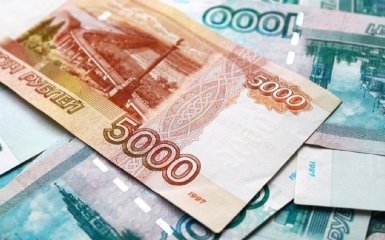In Russia, the dollar rate on the international Forex market exceeded 114 rubles on November 27, and the euro rate exceeded 120 rubles. The last time major world currencies reached this level in the Russian Federation was in mid-March 2022.
Points of attention
- The sharp decline of the Russian ruble is driven by new US sanctions, capital outflow from the stock market, and currency shortages caused by sanctions against Russia's financial sector.
- Experts predict a further fall in the ruble exchange rate to 115-120 per dollar by the end of the year, urging the Russian government and Central Bank to take measures like increasing currency sales by exporters and reducing government purchases.
- Despite the ruble's fall, stable oil prices provide some benefits to exporters amidst the challenging economic situation in Russia.
- The outflow of capital from the Russian stock market, reaching over 20% since the beginning of the year, contributes significantly to the ruble's depreciation.
- Sanctions against Russia's financial sector complicate foreign trade operations, exacerbating the currency shortage problem and impacting various industries, especially oil and gas.
The Russian ruble continues its sharp decline
The fall of the ruble is facilitated by the new package of US sanctions against the Russian economy, in particular against Gazprombank, one of the largest currency suppliers in the country.
The day before, the Central Bank of the Russian Federation set the dollar rate at 105 rubles per dollar and 110.49 per euro. The forecast was spelled out in the draft federal budget adopted by the State Duma and the Federation Council.
In November, Russian Finance Minister Anton Siluanov said that the supposed weakening of the ruble is helping exports. The Ministry predicted an average dollar exchange rate of 103 rubles by 2027, The Bell wrote. Such a forecast was written in the draft federal budget approved by the State Duma and the Federation Council.
However, the ruble is depreciating faster than the department's forecasts. Experts point to the price of oil and the "speculative component", i.e., the exchange game on the weakening of the ruble, among the possible reasons for the reduction in the inflow of currency.
The ruble's official exchange rate, set by the central bank, broke above 100 against the dollar this week for the first time since October 2023 amid fears of a further escalation in Russia's standoff with the West.
The ruble has been falling since Ukraine's invasion of Russia's Kursk region began on Aug. 6 and has since lost about 20% against the dollar, LSEG data show.
In Russia, the collapse of the ruble continues
In Russia, the active collapse of the ruble continues. The Russian authorities urgently try to put out the "fire", only slightly lowering the exchange rate, which after an hour began to rise again.
Since the beginning of the year, the ruble has lost 16% of its value against the dollar, and experts predict further weakening of the Russian currency.
The Russian currency continues to fall during the last day, and the authorities cannot stop the collapse.
The key reason for the weakening of the ruble is the significant outflow of capital from the Russian stock market, which has fallen by more than 20% since the beginning of the year.
Investors massively transfer funds from stocks to deposits, which offer interest rates higher than the record base rate of the Central Bank of the Russian Federation — 21%.
Experts predict that by the end of the year the ruble exchange rate may fall to 115-120 per dollar. They say that the Russian government and the Central Bank should take measures, including forcing exporters to sell more currency and reducing government purchases.
Sanctions against the Russian financial sector also play a key role. They have complicated foreign trade operations, especially in the oil and gas sectors, causing a shortage of foreign exchange. Despite this, oil prices remain stable, helping exporters to benefit from a weak ruble.
More on the topic
- Category
- Economics
- Publication date
- Додати до обраного


